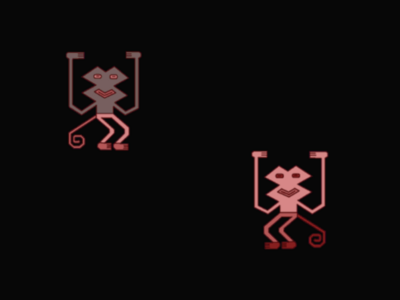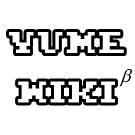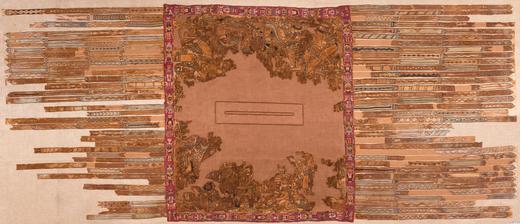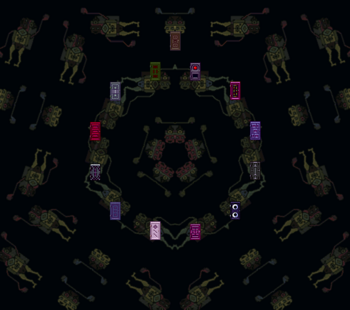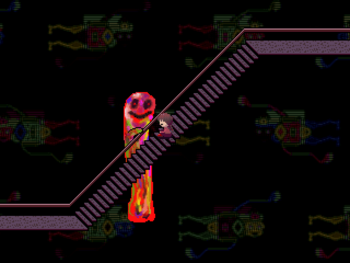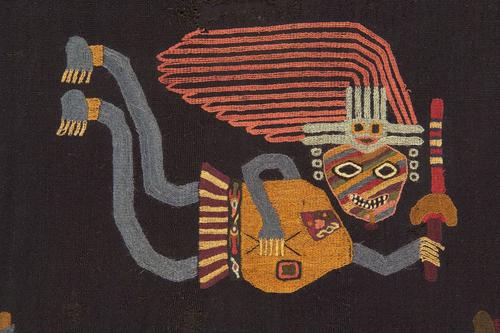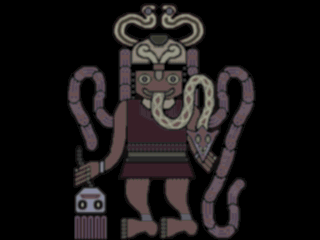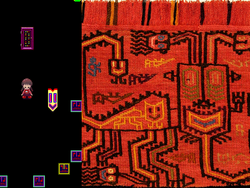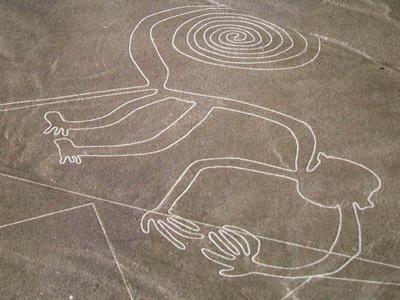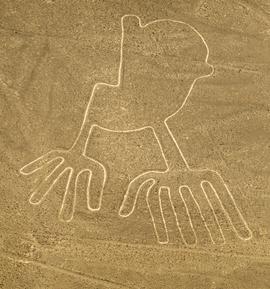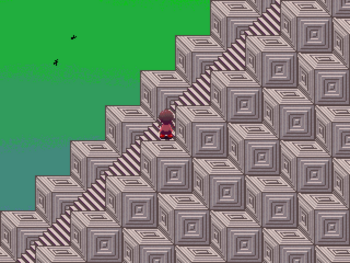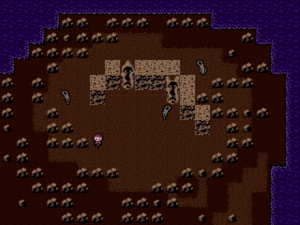No edit summary |
(→Paracas culture: formatting and image caption) |
||
| (7 intermediate revisions by 2 users not shown) | |||
| Line 1: | Line 1: | ||
[[File:Yn-aztecrave.png|right|thumb|320px|The [[Yume Nikki | [[File:Yn-aztecrave.png|right|thumb|320px|The [[Yume Nikki:Aztec Rave Monkey|Aztec Rave Monkey]], one of the most recognizable examples of this imagery in the game.]] | ||
One of the most noteworthy visual themes in ''[[Yume Nikki | One of the most noteworthy visual themes in ''[[Yume Nikki:Yume Nikki|Yume Nikki]]'' is that of '''indigenous imagery'''. While it is up to speculation as to whether or not these cultures that are displayed so prominently alongside Japanese culture have any significance, there exist many [[Yume Nikki:Theories|theories]] as to how this could relate to the characters and the overarching message and themes of the game. | ||
Some prominent examples are the [[Yume Nikki | Some prominent examples are the [[Yume Nikki:Aztec Rave Monkey|Aztec Rave Monkey]] (which appears many times in backgrounds and its own [[Yume Nikki:Events#The Aztec Rave Monkey|event]]) and the [[Yume Nikki:KALIMBA|KALIMBA]] that appear in [[Yume Nikki:Madotsuki's Room|Madotsuki's Room]], which even has a similar design to her carpet. | ||
==Paracas culture== | ==Paracas culture== | ||
While many fans have speculated that these themes are Aztec, it has often been instead suggested that the imagery in ''Yume Nikki'' more closely resembles artwork from the ancient [ | While many fans have speculated that these themes are Aztec, it has often been instead suggested that the imagery in ''Yume Nikki'' more closely resembles artwork from the ancient [[Wikipedia:Paracas_culture|'''Paracas culture''']] of modern-day southern Peru. This Andean society lived from around 800 BC to 100 BC, and made significant works using textile art as they had a wide knowledge of water management. This art extended to their process for funerals: wrapping up their deceased and offerings in stylized embroidered cloths. Their art style can be seen many times in the game itself. | ||
[[File:1391979338861.jpeg|thumb|center|520px|A full Paracas poncho.]] | |||
[[File:101824.jpg|thumb|center|200px|A close-up of the left image, showing a figure similar to [[Yume Nikki:Madotsuki|Madotsuki]].]] | |||
| | |||
"Flying man" figures also appear throughout the game, as they are a common motif in Paracas burial textiles. The background of the [[Yume Nikki:Nexus|Nexus]] uses both heads and full figures. [[Yume Nikki:Number World|Number World]] also has this design in the stairway located behind a [[Yume Nikki:Zippertile|Zippertile]]. | |||
[[File:The Nexus.png|thumb|center|350px|The Nexus, which has a "flying man" background.]] | |||
[[File:Kyukyu.png|center|thumb|350px|The Number World stairway background also has a similar design.]] | |||
[[File:Peruvianperson.jpg|thumb|500px|center]] | [[File:Peruvianperson.jpg|thumb|500px|center]] | ||
In [[Yume Nikki | In [[Yume Nikki:Eyeball World|Eyeball World]], the background closely resembles a reoccurring figure appearing in Paracas textile work. Generally known as "dream beings" or "dream spirits", they would appear in one's dreams, visions, or nightmares while carrying the head of the dreamer, typically to signify a sense of self-awareness while sleeping. | ||
[[File:99510.png|thumb|center|350px|A dream | |||
Another aspect of the Eyeball World background that appears in Paracas works is the snake that emerges from the being's mouth, which appears to reference the theme of ritual vomiting that cultures such as the Paracas used to literally and spiritually relieve themselves of toxins. Snakes would often represent the "evil" of a person leaving their body via the mouth. Another example of ritual vomiting appears in the KALIMBA TV Channel event, where multiple figures appear to be dancing while something emerges from their mouth. | |||
[[File:99510.png|thumb|center|350px|A dream spirit shown holding a severed head, and vomiting a snake.]] | |||
It should also be noted that one of the [[Yume Nikki | It should also be noted that one of the [[Yume Nikki:Neon Creatures|Neon Creatures]] bears a striking resemblance to some creatures found on Andean textiles, particularly mantles made in the Paracas culture. Extending to both Andean culture and [[Yume Nikki:Neon World|Neon World]] as a whole, some of the structures found there, as well as the grid-like face patterns that make up the world's floor, resemble various textiles made by native people of the Andes. The colorful nature of Neon World and this apparent Andean inspiration may also be inspired by the [[Wikipedia:Wiphala|Wiphala]], an emblem used to represent the indigenous peoples of the Andes. | ||
[[File:Uboachan theories 1365.png|thumb|center|250px|Example of a Neon World | [[File:Uboachan theories 1365.png|thumb|center|250px|Example of a Neon World NPC resembling Andean textile craft.]] | ||
In ancient Peruvian cultures such as these, dreams had high significance in that they can be spiritual events that, when finished, caused the dreamer to learn something about themselves. It is possible that these themes were chosen by [[Yume Nikki | In ancient Peruvian cultures such as these, dreams had high significance in that they can be spiritual events that, when finished, caused the dreamer to learn something about themselves. It is possible that these themes were chosen by [[Yume Nikki:KIKIYAMA|KIKIYAMA]] as a way to represent Madotsuki's mind as if she were doing the same. | ||
==Nazca culture== | ==Nazca culture== | ||
Directly proceeding the Paracas were the '''[ | Directly proceeding the Paracas were the '''[[Wikipedia:Nazca culture|Nazca]]''', another ancient Peruvian society that shared many similarities in terms of their art and culture. These people lived from around 100 BC to 800 AD in the [[Wikipedia:Department of Ica|Ica Region]]. Dreams often played a significant role in this culture as well, which further continues the comparisons between these societies and a possible greater meaning to the game itself. | ||
Although the Aztec Rave Monkey is often labeled as a representation of Aztec culture, many fans have said that the character more closely resembles line drawings made by Nazca | Although the Aztec Rave Monkey is often labeled as a representation of Aztec culture, many fans have said that the character more closely resembles [[Wikipedia:Nazca Lines|line drawings]] made by Nazca societies. One other figure seen alongside the Nazca Lines resembles a small figure with two hands sprouting out from below it, which may have been the inspiration for [[Yume Nikki:Takofuusen|Takofuusen]]. The Nazca Lines could also be referenced in [[Yume Nikki:Graffiti World|Graffiti World]], where a giant monkey-like design can be seen once the entire map is viewed. | ||
{| | {| | ||
|[[File:Nazcanravemonkey.jpg|thumb|center|400px|A Nazca line drawing resembling a monkey.]]||[[File:NazcaLinesHands.jpeg|thumb|270px|center|A Nazca line drawing resembling a pair of hands.]] | |[[File:Nazcanravemonkey.jpg|thumb|center|400px|A Nazca line drawing resembling a monkey.]]||[[File:NazcaLinesHands.jpeg|thumb|270px|center|A Nazca line drawing resembling a pair of hands.]] | ||
|} | |} | ||
One common motif in Nazca art is the appearance of decapitated heads, also known as trophy heads. They are most notable for their appearance in Nazca ceramics and were believed to be used either for religious rituals, trophies, or agriculture, though their overall use is still unknown. The most notable appearance of decapitated heads in the game is the [[Yume Nikki | One common motif in Nazca art is the appearance of decapitated heads, also known as trophy heads. They are most notable for their appearance in Nazca ceramics and were believed to be used either for religious rituals, trophies, or agriculture, though their overall use is still unknown. The most notable appearance of decapitated heads in the game is the [[Yume Nikki:Severed Heads|Severed Heads]], which may also be related to the [[Yume Nikki:Henkei Shita|Henkei Shita]], who resemble headless bodies. One other instance is the background in Eyeball World, which presents itself as a being holding a person's head, though the being resembles Paracas textile art more than Nazca art. One common modification made to the severed heads was a rope hole going through the forehead, which may be another interpretation of the snake- or intestine-like object that the being wields. It should also be noted that [[Yume Nikki:Severed Blue Head|another severed head]] appears in the same world. | ||
==Aztec culture== | ==Aztec culture== | ||
Another culture that seems to be represented in the game is that of the '''[ | Another culture that seems to be represented in the game is that of the '''[[Wikipedia:Aztecs|Aztecs]]''', a culture that lived from 1300 to 1521 AD that was made up of various ethnic groups from [[Wikipedia:Mesoamerica|Mesoamerica]]. | ||
One of the most well-known aspects of Aztec culture | One of the most well-known aspects of Aztec culture were their religious sacrifices. These sacrifices were made to deities as a way of thanking them for continuing the circle of life, usually with offerings of food, animals, and humans. These rituals often took place at the top of pyramids during ritual festivals, which were considered temples or places of worship as well as homes for the many deities the Aztecs worshipped. In ''Yume Nikki'', pyramids appear in various locations. These include the [[Yume Nikki:Checkered Tile Path|Checkered Tile Path]], the [[Yume Nikki:Wilderness|Wilderness]], the [[Yume Nikki:Neon Tile Path|Neon Tile Path]], and [[Yume Nikki:FC World B|FC World B]]. The [[Yume Nikki:Events#The Falling Man|Falling Man]] event also appears to be associated with these sacrifices, as the bodies of human sacrifices appear to have been thrown or tumbled down the pyramid temple stairs as seen in Aztec art and documentation. Another aspect associated with this appears to be the severed head motif, which is detailed above in the Nazca culture section. | ||
[[File:Lucky.png|thumb|center|350px|Two men fall from the sky, possibly referencing the sacrifices made at the top of Aztec temples.]] | [[File:Lucky.png|thumb|center|350px|Two men fall from the sky, possibly referencing the sacrifices made at the top of Aztec temples.]] | ||
==Rapa Nui culture== | ==Rapa Nui culture== | ||
The '''[ | The '''[[Wikipedia:Rapa Nui people|Rapa Nui]]''' are the indigenous peoples of [[Wikipedia:Easter Island|Easter Island]], an island in the southeastern Pacific. | ||
Between the 18th and 19th centuries, a stone village known as [ | Between the 18th and 19th centuries, a stone village known as [[Wikipedia:Orongo|Orongo]] was home to a birdman cult known as [[Wikipedia:Tangata_manu|Tangata manu]] (literally translating to "bird-man"). The cult held a traditional competition to collect the first tern egg on the nearby [[Wikipedia:Motu Nui|Motu Nui]] islet. Contestants, who were all men and revealed through the dreams of prophets, were declared the cult's tangata-manu (bird-man) upon completing the task and were both considered sacred and expected to seclude themselves in a ceremonial house where they would only eat and sleep. Petroglyphs were also made, depicting a bird-headed being holding an egg in its hand. | ||
The | The Tangata manu competition has similarities to how the [[Yume Nikki:Ending|game's ending]] is achieved. Madotsuki must search for the various effects and drop them off in the Nexus, which come in the form of eggs once dropped. The seclusion of the competition's winners may also parallel Madotsuki, as she is known to seclude herself in her room and can either "eat" (which may refer to the [[Yume Nikki:NASU|''NASU'']] game, where the goal is to eat eggplants) or sleep (which is the only way to enter the dream world from the real world). The petroglyphs of the bird-man may also be the inspiration for either the ''NASU'' game, as the player character resembles a human with a bird's head and must collect eggplants, or the [[Yume Nikki:Toriningen|Toriningen]], who appear to be bird-people with their beak-like noses. | ||
One of the most iconic aspects of Easter Island are the Moai, giant statues carved by the Rapa Nui people resembling humans, with their big heads being the statue's most notable trait. While there are various structures and characters resembling giant heads in ''Yume Nikki'', the closest one to resemble the Moai are those found in the FC Worlds (two in FC World B, one in the [[Yume Nikki | One of the most iconic aspects of Easter Island are the [[Wikipedia:Moai|Moai]], giant statues carved by the Rapa Nui people resembling humans, with their big heads being the statue's most notable trait. While there are various structures and characters resembling giant heads in ''Yume Nikki'', the closest one to resemble the Moai are those found in the FC Worlds (two in FC World B, one in the [[Yume Nikki:FC Dungeon|FC Dungeon]], and four in the unused [[Yume Nikki:FC World C|FC World C]]). It should also be noted that the FC World (with the exception of the [[Yume Nikki:FC House|FC House]] area) is made up of multiple islands, which may allude to Easter Island being an inspiration. | ||
[[File:Fcworldb.png|thumb|center|300px|Moai-like statues in FC World.]] | [[File:Fcworldb.png|thumb|center|300px|Moai-like statues in FC World.]] | ||
Another aspect found on Easter Island, the Rongorongo glyphs, may have inspired other aspects of ''Yume Nikki''. Rongorongo was discovered in the 19th century and is largely considered a form of writing, though multiple attempts at deciphering the symbols have been unsuccessful. Some of the Rongorongo symbols resemble aspects and characters in ''Yume Nikki''. For example, [[Yume Nikki | Another aspect found on Easter Island, the [[Wikipedia:Rongorongo|Rongorongo glyphs]], may have inspired other aspects of ''Yume Nikki''. Rongorongo was discovered in the 19th century and is largely considered a form of writing, though multiple attempts at deciphering the symbols have been unsuccessful. Some of the Rongorongo symbols resemble aspects and characters in ''Yume Nikki''. For example, [[Yume Nikki:Strober|Strober]] resembles one of the glyphs that is thought to show a person eating, which may relate to how Strober appears to be constantly eating something and gives the [[Yume Nikki:Effects#Fat|Fat]] effect. It should also be noted that one of the symbols resembles a [[Yume Nikki:Pirori|Pirori]], which can be found alongside various characters or places with Rongorongo or Rapa Nui aspects (the [[Yume Nikki:Docks|Docks]], the [[Yume Nikki:Sewers|Sewers]], and by the Moai-like statues [[Yume Nikki:FC World B|FC World B]]). | ||
[[File:YNRongorongo.png|thumb|center|500px|Various Rongorongo symbols that may have inspired aspects of ''Yume Nikki''.]] | [[File:YNRongorongo.png|thumb|center|500px|Various Rongorongo symbols that may have inspired aspects of ''Yume Nikki''.]] | ||
==African | ==African cultures== | ||
Although to a lesser extent, African imagery has also been noted by fans of the game, though in terms of the soundtrack. The sound design of the game is known for its often weird sounds, whether this be in the form of droning, looping music, or the strange noises that many characters make upon interaction. Among these, it is not uncommon to come across tribal-like beats. | Although to a lesser extent, African imagery has also been noted by fans of the game, though in terms of the soundtrack. The sound design of the game is known for its often weird sounds, whether this be in the form of droning, looping music, or the strange noises that many characters make upon interaction. Among these, it is not uncommon to come across tribal-like beats. | ||
The [[Yume Nikki | The [[Yume Nikki:Events#The_KALIMBA_TV_Channel|KALIMBA TV Channel event]] is one of the most common examples, as the song features a kalimba as its main instrument. The kalimba is an instrument modeled after the [[Wikipedia:Mbira|mbira]], an African [[Wikipedia:Lamellophone|lamellophone]]. | ||
[[File:KALIMBA TV.gif|thumb|center|300px|The KALIMBA TV Channel event taking place.]] | [[File:KALIMBA TV.gif|thumb|center|300px|The KALIMBA TV Channel event taking place.]] | ||
{{audio|title=KALIMBA|filename=KALIMBA.ogg|align=center}} | |||
Two notable examples appear in the [[Yume Nikki | Two notable examples appear in the [[Yume Nikki:White Desert#White Desert A|White Desert]], which are associated with characters found there. One can be heard with [[Yume Nikki:Takofuusen|Takofuusen]], who randomly appears across the screen and is accompanied by one of these beat-like sounds. Another is [[Yume Nikki:Monoko|Monoko]], who starts a [[Yume Nikki:Events#Monoko|full-screen event]] accompanied by a similar, repetitive beat when the [[Yume Nikki:Effects#Stoplight|Stoplight]] effect is used near her. | ||
{| | {| | ||
|[[File: | |[[File:YN Takofuusen.png|thumb|360px|center|It produces a short beat as it flies by.]] | ||
|[[File:YN Monoko Dance.png|thumb|340px|center|Monoko, whose event also makes a similar beat.]] | |||
|} | |} | ||
{{audio|title=Takofuusen's beat|filename=M_s.ogg|align=center}} | |||
{{audio|title=Monoko's beat|filename=BGM 022.ogg|align=center}} | |||
Another character that makes a similar noise is the [[Yume Nikki | Another character that makes a similar noise is the [[Yume Nikki:Fisherman|Fisherman]], who is found in [[Yume Nikki:Windmill World|Windmill World]]. The [[Yume Nikki:Lizardman|Lizardmen]] also have faces and colors reminiscent of traditional African tribal masks. In ''[[Yume Nikki:YUMENIKKI –DREAM DIARY–|YUMENIKKI –DREAM DIARY–]]'', the player obtains a kalimba from one of the [[Yume Nikki:Train Passengers|Train Passengers]] after playing a melody on the [[Yume Nikki:Effects#Flute|Flute]]. | ||
==Interpretation== | ==Interpretation== | ||
It can be interpreted that Madotsuki herself feels as though she is connected with these cultures and their wide interpretations of dreams, as she has items in the real world that even resemble their art, particularly her carpet. As mentioned before, the significance of dreams in these ancient | It can be interpreted that Madotsuki herself feels as though she is connected with these cultures and their wide interpretations of dreams, as she has items in the real world that even resemble their art, particularly her carpet. As mentioned before, the significance of dreams in these ancient cultures and their beliefs may tell of a deeper context of the game. | ||
Since dreams would often represent sicknesses and the deepest feelings and essence of a person, the ones that Madotsuki faces are not as weird as they are her coming to terms with her own fears. This could be why they are as strange as they are, since what they really represent is a sort of "cleansing" of her mind of these harmful thoughts. | Since dreams would often represent sicknesses and the deepest feelings and essence of a person, the ones that Madotsuki faces are not as weird as they are her coming to terms with her own fears. This could be why they are as strange as they are, since what they really represent is a sort of "cleansing" of her mind of these harmful thoughts. | ||
Another theory is that Madotsuki herself is a Japanese Peruvian, explaining both motifs from South American and Japanese culture. | Another theory is that Madotsuki herself is a [[Wikipedia:Japanese Peruvians|Japanese Peruvian]], explaining both motifs from South American and Japanese culture. | ||
[[File:Shieldbackground.png|thumb|400px|center|The background of [[Yume Nikki | [[File:Shieldbackground.png|thumb|400px|center|The background of [[Yume Nikki:Shield-Folk World|Shield-Folk World]], showing two monkey creatures similar to the Paracas style.]] | ||
[[Category:Yume Nikki Theoretical Discussions]] | [[Category:Yume Nikki Theoretical Discussions]] | ||
Latest revision as of 17:45, 27 November 2024
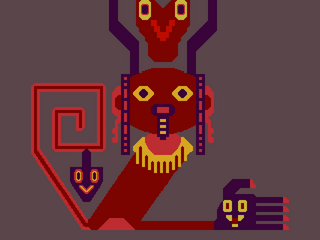
One of the most noteworthy visual themes in Yume Nikki is that of indigenous imagery. While it is up to speculation as to whether or not these cultures that are displayed so prominently alongside Japanese culture have any significance, there exist many theories as to how this could relate to the characters and the overarching message and themes of the game.
Some prominent examples are the Aztec Rave Monkey (which appears many times in backgrounds and its own event) and the KALIMBA that appear in Madotsuki's Room, which even has a similar design to her carpet.
Paracas culture
While many fans have speculated that these themes are Aztec, it has often been instead suggested that the imagery in Yume Nikki more closely resembles artwork from the ancient Paracas culture of modern-day southern Peru. This Andean society lived from around 800 BC to 100 BC, and made significant works using textile art as they had a wide knowledge of water management. This art extended to their process for funerals: wrapping up their deceased and offerings in stylized embroidered cloths. Their art style can be seen many times in the game itself.
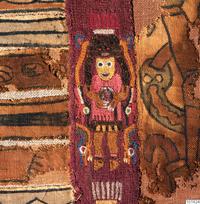
"Flying man" figures also appear throughout the game, as they are a common motif in Paracas burial textiles. The background of the Nexus uses both heads and full figures. Number World also has this design in the stairway located behind a Zippertile.
In Eyeball World, the background closely resembles a reoccurring figure appearing in Paracas textile work. Generally known as "dream beings" or "dream spirits", they would appear in one's dreams, visions, or nightmares while carrying the head of the dreamer, typically to signify a sense of self-awareness while sleeping.
Another aspect of the Eyeball World background that appears in Paracas works is the snake that emerges from the being's mouth, which appears to reference the theme of ritual vomiting that cultures such as the Paracas used to literally and spiritually relieve themselves of toxins. Snakes would often represent the "evil" of a person leaving their body via the mouth. Another example of ritual vomiting appears in the KALIMBA TV Channel event, where multiple figures appear to be dancing while something emerges from their mouth.
It should also be noted that one of the Neon Creatures bears a striking resemblance to some creatures found on Andean textiles, particularly mantles made in the Paracas culture. Extending to both Andean culture and Neon World as a whole, some of the structures found there, as well as the grid-like face patterns that make up the world's floor, resemble various textiles made by native people of the Andes. The colorful nature of Neon World and this apparent Andean inspiration may also be inspired by the Wiphala, an emblem used to represent the indigenous peoples of the Andes.
In ancient Peruvian cultures such as these, dreams had high significance in that they can be spiritual events that, when finished, caused the dreamer to learn something about themselves. It is possible that these themes were chosen by KIKIYAMA as a way to represent Madotsuki's mind as if she were doing the same.
Nazca culture
Directly proceeding the Paracas were the Nazca, another ancient Peruvian society that shared many similarities in terms of their art and culture. These people lived from around 100 BC to 800 AD in the Ica Region. Dreams often played a significant role in this culture as well, which further continues the comparisons between these societies and a possible greater meaning to the game itself.
Although the Aztec Rave Monkey is often labeled as a representation of Aztec culture, many fans have said that the character more closely resembles line drawings made by Nazca societies. One other figure seen alongside the Nazca Lines resembles a small figure with two hands sprouting out from below it, which may have been the inspiration for Takofuusen. The Nazca Lines could also be referenced in Graffiti World, where a giant monkey-like design can be seen once the entire map is viewed.
One common motif in Nazca art is the appearance of decapitated heads, also known as trophy heads. They are most notable for their appearance in Nazca ceramics and were believed to be used either for religious rituals, trophies, or agriculture, though their overall use is still unknown. The most notable appearance of decapitated heads in the game is the Severed Heads, which may also be related to the Henkei Shita, who resemble headless bodies. One other instance is the background in Eyeball World, which presents itself as a being holding a person's head, though the being resembles Paracas textile art more than Nazca art. One common modification made to the severed heads was a rope hole going through the forehead, which may be another interpretation of the snake- or intestine-like object that the being wields. It should also be noted that another severed head appears in the same world.
Aztec culture
Another culture that seems to be represented in the game is that of the Aztecs, a culture that lived from 1300 to 1521 AD that was made up of various ethnic groups from Mesoamerica.
One of the most well-known aspects of Aztec culture were their religious sacrifices. These sacrifices were made to deities as a way of thanking them for continuing the circle of life, usually with offerings of food, animals, and humans. These rituals often took place at the top of pyramids during ritual festivals, which were considered temples or places of worship as well as homes for the many deities the Aztecs worshipped. In Yume Nikki, pyramids appear in various locations. These include the Checkered Tile Path, the Wilderness, the Neon Tile Path, and FC World B. The Falling Man event also appears to be associated with these sacrifices, as the bodies of human sacrifices appear to have been thrown or tumbled down the pyramid temple stairs as seen in Aztec art and documentation. Another aspect associated with this appears to be the severed head motif, which is detailed above in the Nazca culture section.
Rapa Nui culture
The Rapa Nui are the indigenous peoples of Easter Island, an island in the southeastern Pacific.
Between the 18th and 19th centuries, a stone village known as Orongo was home to a birdman cult known as Tangata manu (literally translating to "bird-man"). The cult held a traditional competition to collect the first tern egg on the nearby Motu Nui islet. Contestants, who were all men and revealed through the dreams of prophets, were declared the cult's tangata-manu (bird-man) upon completing the task and were both considered sacred and expected to seclude themselves in a ceremonial house where they would only eat and sleep. Petroglyphs were also made, depicting a bird-headed being holding an egg in its hand.
The Tangata manu competition has similarities to how the game's ending is achieved. Madotsuki must search for the various effects and drop them off in the Nexus, which come in the form of eggs once dropped. The seclusion of the competition's winners may also parallel Madotsuki, as she is known to seclude herself in her room and can either "eat" (which may refer to the NASU game, where the goal is to eat eggplants) or sleep (which is the only way to enter the dream world from the real world). The petroglyphs of the bird-man may also be the inspiration for either the NASU game, as the player character resembles a human with a bird's head and must collect eggplants, or the Toriningen, who appear to be bird-people with their beak-like noses.
One of the most iconic aspects of Easter Island are the Moai, giant statues carved by the Rapa Nui people resembling humans, with their big heads being the statue's most notable trait. While there are various structures and characters resembling giant heads in Yume Nikki, the closest one to resemble the Moai are those found in the FC Worlds (two in FC World B, one in the FC Dungeon, and four in the unused FC World C). It should also be noted that the FC World (with the exception of the FC House area) is made up of multiple islands, which may allude to Easter Island being an inspiration.
Another aspect found on Easter Island, the Rongorongo glyphs, may have inspired other aspects of Yume Nikki. Rongorongo was discovered in the 19th century and is largely considered a form of writing, though multiple attempts at deciphering the symbols have been unsuccessful. Some of the Rongorongo symbols resemble aspects and characters in Yume Nikki. For example, Strober resembles one of the glyphs that is thought to show a person eating, which may relate to how Strober appears to be constantly eating something and gives the Fat effect. It should also be noted that one of the symbols resembles a Pirori, which can be found alongside various characters or places with Rongorongo or Rapa Nui aspects (the Docks, the Sewers, and by the Moai-like statues FC World B).
African cultures
Although to a lesser extent, African imagery has also been noted by fans of the game, though in terms of the soundtrack. The sound design of the game is known for its often weird sounds, whether this be in the form of droning, looping music, or the strange noises that many characters make upon interaction. Among these, it is not uncommon to come across tribal-like beats.
The KALIMBA TV Channel event is one of the most common examples, as the song features a kalimba as its main instrument. The kalimba is an instrument modeled after the mbira, an African lamellophone.
Two notable examples appear in the White Desert, which are associated with characters found there. One can be heard with Takofuusen, who randomly appears across the screen and is accompanied by one of these beat-like sounds. Another is Monoko, who starts a full-screen event accompanied by a similar, repetitive beat when the Stoplight effect is used near her.
Another character that makes a similar noise is the Fisherman, who is found in Windmill World. The Lizardmen also have faces and colors reminiscent of traditional African tribal masks. In YUMENIKKI –DREAM DIARY–, the player obtains a kalimba from one of the Train Passengers after playing a melody on the Flute.
Interpretation
It can be interpreted that Madotsuki herself feels as though she is connected with these cultures and their wide interpretations of dreams, as she has items in the real world that even resemble their art, particularly her carpet. As mentioned before, the significance of dreams in these ancient cultures and their beliefs may tell of a deeper context of the game.
Since dreams would often represent sicknesses and the deepest feelings and essence of a person, the ones that Madotsuki faces are not as weird as they are her coming to terms with her own fears. This could be why they are as strange as they are, since what they really represent is a sort of "cleansing" of her mind of these harmful thoughts.
Another theory is that Madotsuki herself is a Japanese Peruvian, explaining both motifs from South American and Japanese culture.
